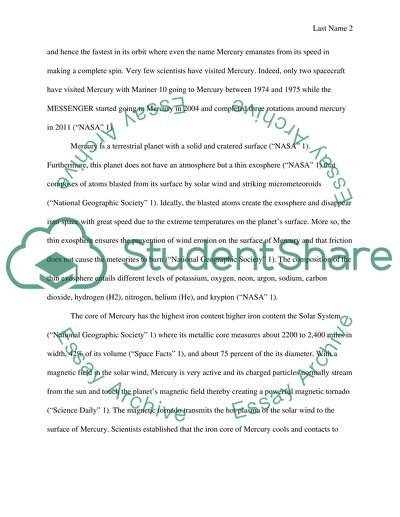Planet of Mercury Essay Example | Topics and Well Written Essays - 750 words. Retrieved from https://studentshare.org/geography/1494619-write-about-the-planet-of-mercury
Planet of Mercury Essay Example | Topics and Well Written Essays - 750 Words. https://studentshare.org/geography/1494619-write-about-the-planet-of-mercury.


